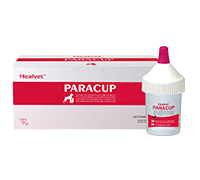Comparison of methods for examination of fecal eggs
Finding parasite eggs in feces is one of the clinical routine examinations. Increasing the detection rate of parasite eggs can provide a reliable diagnostic basis for the clinic. The fecal egg test is suitable for detecting parasites that are parasitic in the digestive tract and organs associated with the digestive tract (liver, pancreas). It can also be used to examine parasites in the respiratory tract. The eggs or larvae are often swallowed with sputum. The feces are discharged.
First, direct smear method
Method: Drop a drop of saturated saline or water on the slide, then put the same amount of feces, and mix the feces with saline or water thoroughly with a cotton swab. Smear on the slide, the coating should be thin enough to see the words on the newspaper through the slide, and then cover the slide for microscopy.
Advantages and Disadvantages: Advantages: Short preparation time and less equipment required for operation. Disadvantages: 1. When the number of eggs is small, the detection rate is not high, and it is required to do several microscopic examinations one by one. 2. A large amount of unrelated fecal debris on the slide may be mixed with the parasite. 3. The slide is a flat surface. After the feces are mixed with the salt water, the eggs are mixed in it, and it is not easy to be released from it, which is likely to cause missed detection.
Second, saturated brine floating method
Method: The basic principle is to use a solution with a larger specific gravity than the eggs to float the eggs on the surface of the liquid. Wash the container with about 1/3 of saturated salt water, take about 2g of the stool to be tested, put it into the container, stir it evenly with a cotton swab, then slowly fill the container with saturated brine and gently cover the coverslip. After about 15-30 minutes, the eggs with relatively small specific gravity floated on the surface, and the coverslips were moved on a glass slide for microscopic examination.
Advantages and Disadvantages: Advantages: The detection rate is higher than that of the direct smear method, and most of the nematode eggs and mites can be examined. Disadvantages: Not suitable for trematode eggs and echinococcosis eggs.
Third, centrifugal precipitation method
Method: Take a clean test tube and put about 1/3 of saline, put it into the stool to be tested, gently stir it, and after centrifugation for 3 to 5 minutes, slowly pour out the liquid on the surface or aspirate it with a straw to discard the precipitate of the lower layer. A small amount of fine precipitate was pipetted onto the slide, and the coverslip was covered and examined under a microscope.
Advantages and Disadvantages: Advantages: It can check the eggs that cannot float in the suspension or the eggs that are easily dehydrated and deformed in the suspension. For example, the eggs are very heavy, and the floating method is not applicable. Generally, the precipitation method is used. Disadvantages: The operation is cumbersome.
Fourth, the sediment collection method
PARACUP--Animal Intestinal Parasite Detection Cup

High detection rate
The method of precipitating and collecting eggs is used to detect the eggs in the feces mainly through sample concentration, impurity separation and microscopic observation.
The patented formula solution facilitates the release of eggs and dissolves interfering substances, and cooperates with the unique cup structure to greatly improve the detection rate of eggs.
It is suitable for the detection of aphids, hookworms, whipworms, aphids, trematodes, coccidia and other eggs.
Can be widely used in household sampling and inspection, animal hospital clinical testing, dog breeding base, school teaching laboratory, third-party testing institutions, police dog base, large animal farms and zoo veterinary laboratories.
Health and convenience
The patented formulation solution effectively removes odor and reduces discomfort. After sampling, mix and invert for 15 minutes to detect, convenient and fast, no need to directly touch the feces.
The 2-in-1 sampling device with fork spoon is suitable for collecting different samples, especially for clinical examination of diarrhea animals.





